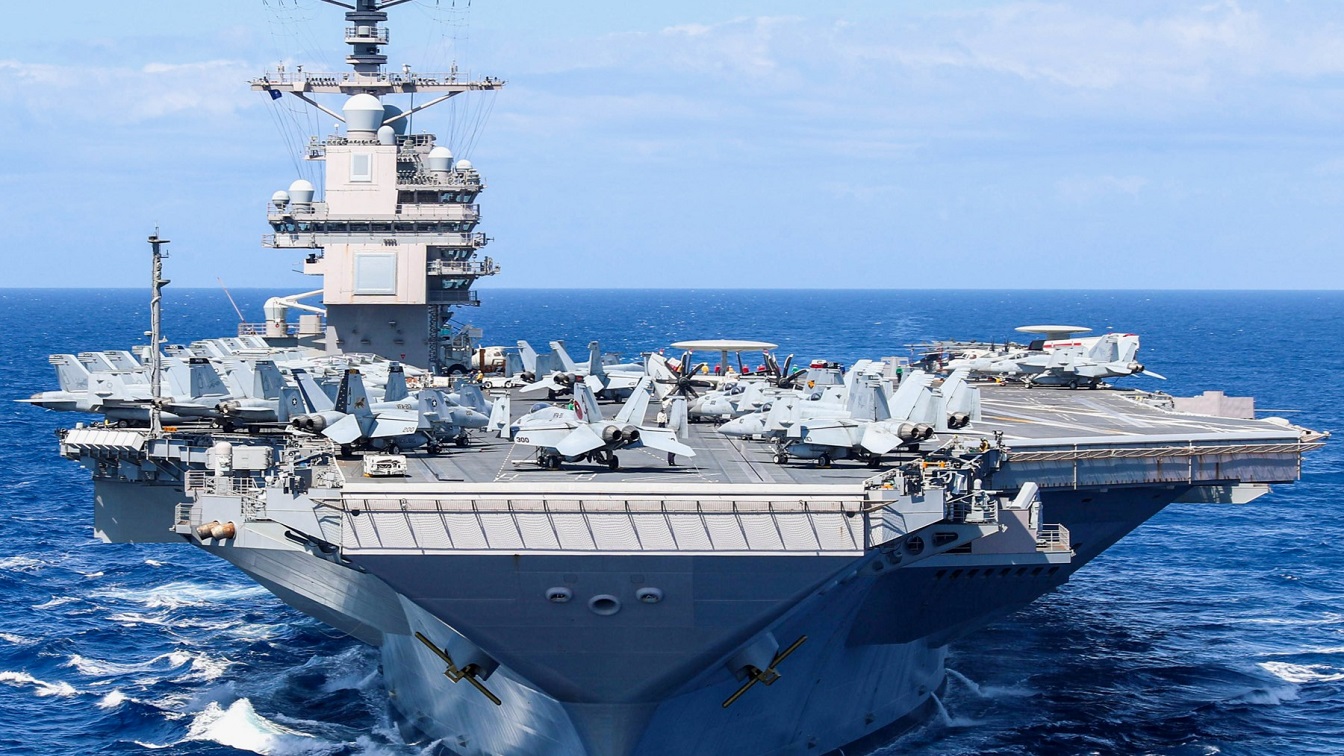Iran’s Islamic Revolutionary Guard Corps Navy (IRGCN) debuted its new catamaran dubbed Shahid Soleimani at a ceremony in Bandar Abbas earlier this month. Named after the former IRGC commander killed by a targeted U.S. airstrike in 2020, the missile corvette is reportedly equipped with stealth features. IRGCN chief Adm. Alireza Tangsiri claimed that the new vessel would increase the navy’s operational reach to around 9,000 kilometers. If true, this feature would theoretically enable the IRGCN to achieve the blue-water capabilities it regularly touts and better threaten U.S. vessels. However, the Iranian regime has exaggerated its capabilities in the past.
The Shahid Soleimani’s proclaimed capabilities
Shahid Soleimani is the first of three catamarans that the IRGCN will unveil overtime. Iranian news outlets describe the new IRGCN corvette as a patrol-combat vessel, which is equipped with a smaller radar cross-section. Perhaps the most significant attribute the Soleimani possesses is its ability to operate far from Iranian bases, a capability that the navy’s other small attack raft cannot accomplish. Additionally, the Soleimani appears to be the first Iranian warship to sport vertical launchers that can fire anti-aircraft missiles up to approximately 150 kilometers. As explained by the Washington Institute for Near East Policy, “the vessel can also use “six box launchers to fire anti-ship missiles such as the Nasir, Ghader, and Ghadir, with ranges of 35 to 300 km.” Combined, these capabilities allegedly make the Soleimani capable of firing at “lethal range” in excess of 750 kilometers.
While these ranges are not unprecedented in Iran’s arsenal, the new corvettes could extend the IRGCN’s threshold, “by launching suicide drones such as the Shahed-131 or 136, which can strike targets up to 1,000 km away (or even 2,200 km according to some unconfirmed sources). The vessel may also be able to launch the Quds-1/2 cruise missile and Article 385 loitering anti-aircraft cruise missile that Iran previously provided to Houthi forces in Yemen.”
Iran has recently increased provocations targeting U.S. ships
Regardless of whether the Soleimani’s reported capabilities are true or not, the IRGCN has undoubtedly increased its number of blue-water operations as the regime has ramped up production and development of ballistic missiles. Iran has long threatened the U.S. presence in the Persian Gulf and has recently provoked several altercations with U.S. naval ships and American sea-drones. In early September, U.S. officials released imagery depicting Iran’s Shahid Baziar support ship unlawfully towing a Saildrone Explorer unmanned surface vessel. Ultimately, Iran released the sea drone. However, this incident did not mark the IRGC’s first attempt at provoking the U.S. in recent years. A few months prior to the sea drone seizure, three Iranian attack craft harassed two U.S. ships in the Strait of Hormuz. In March, three IRGC ships remained dangerously close to U.S. Naval and Coast Guard vessels as they traveled to exit the Gulf.
Iran has taken out a ship before – its own in a faulty simulation
In 2020, an IRGCN frigate accidentally sank an Iranian warship during routine naval exercises in the Gulf of Oman. The frigate Jamaran launched a Noor anti-ship missile which struck the Konarak support ship, killing 19 sailors and injuring more. The Konarak had been towing a floating missile target into place and did not get out of the way fast enough before the Noor struck. Iran’s premier anti-ship cruise missile is a reverse engineered model of the Chinese C-802 anti-ship missile. Equipped with a 74-mile range and a 363-pound warhead, the Noor could inflict some serious damage to enemy vessels. In 2005, the Israeli Navy ship Hanit was seriously damaged by a missile similar to the Noor, according to Popular Mechanics.
Though Iran did manage to take out one of its own ships in a military drill gone wrong, the prospects for the IRGCN to seriously impede the structural integrity of a U.S. carrier is very low. However, as the Iranian regime continues to prioritize its development of longer-range missiles, its naval capabilities could grow to represent a more significant threat to U.S. warships.
Maya Carlin is a Middle East Defense Editor with 19FortyFive. She is also an analyst with the Center for Security Policy and a former Anna Sobol Levy Fellow at IDC Herzliya in Israel. She has by-lines in many publications, including The National Interest, Jerusalem Post, and Times of Israel.

